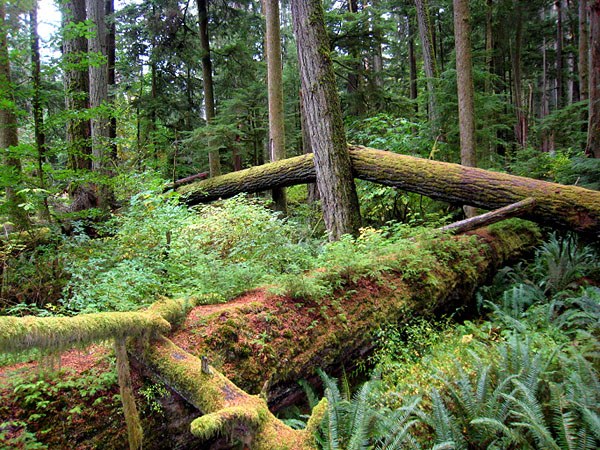Forest as a natural zone
Forest as a natural zone
Forest - a significant area, overgrowntrees, a territory that represents a single ecosystem that plays an important role in maintaining the atmospheric balance. Forests occupy about a third of the Earth's land surface.

The forest is not just a collection of trees,shrubs and other plants. It is a separate ecosystem - a complex community of closely interconnected elements, which includes living organisms (plants, animals, microorganisms) and inanimate components (water, air, soil). Streams of substances, for example, oxygen and water, circulate in the ecosystem, forming a cycle. Thus, elements of animate and inanimate nature are bound together. The most important function of the forest as a natural zone is to produce oxygen. It is thanks to the green plants that produce oxygen in the process of photosynthesis that our planet, in the course of many millions of years of evolutionary development, has acquired a modern look. In addition, green plants are, directly or indirectly, a food source for almost all other living creatures. Classification of forests by natural zones is usually tied to climatic zones. It is customary to identify tropical, subtropical forests and temperate forests. However, trees can grow outside of these climatic zones. Thus, original transition zones are formed: forest-steppe, forest-tundra, forest and high-mountain forests. Tropical forests grow in the equatorial, subequatorial and tropical belts. This natural zone is characterized by high humidity and a warm or hot air temperature throughout the year. Favorable natural conditions serve as a habitat for many species of plants and animals. More than two-thirds of the total species diversity of the planet Earth is concentrated in the humid tropical forests. The natural zone of subtropical forests lies in the subtropics of the Northern and Southern Hemispheres. The natural green massifs in this area were significantly damaged by mass felling. Most of what was once a subtropical forest is now occupied by crops. Among the preserved forests of this zone can be called gemigiley in the south of the Brazilian plateau and south-east Africa, monsoon mixed forests on the coastal territories of Asia, Australia, the Americas, hardwood forests of the Mediterranean and the California coast. The temperate belt is located mainly in the Northern Hemisphere. They occupy a significant part of Europe, Russia, Canada and the north of the United States. This natural zone is characterized by pronounced seasonality of the life cycles of plants and animals. Species composition is much poorer here than in tropical and subtropical forests.







